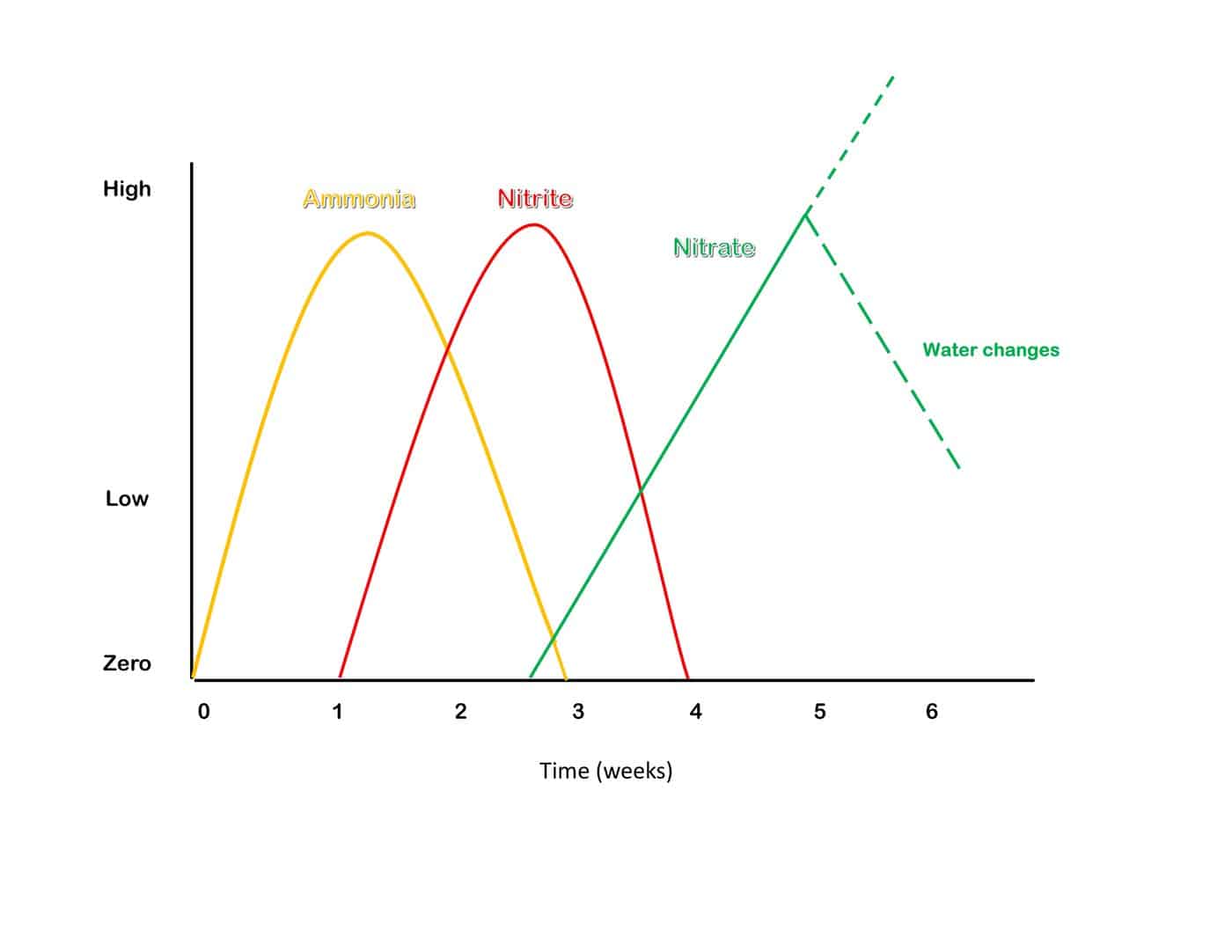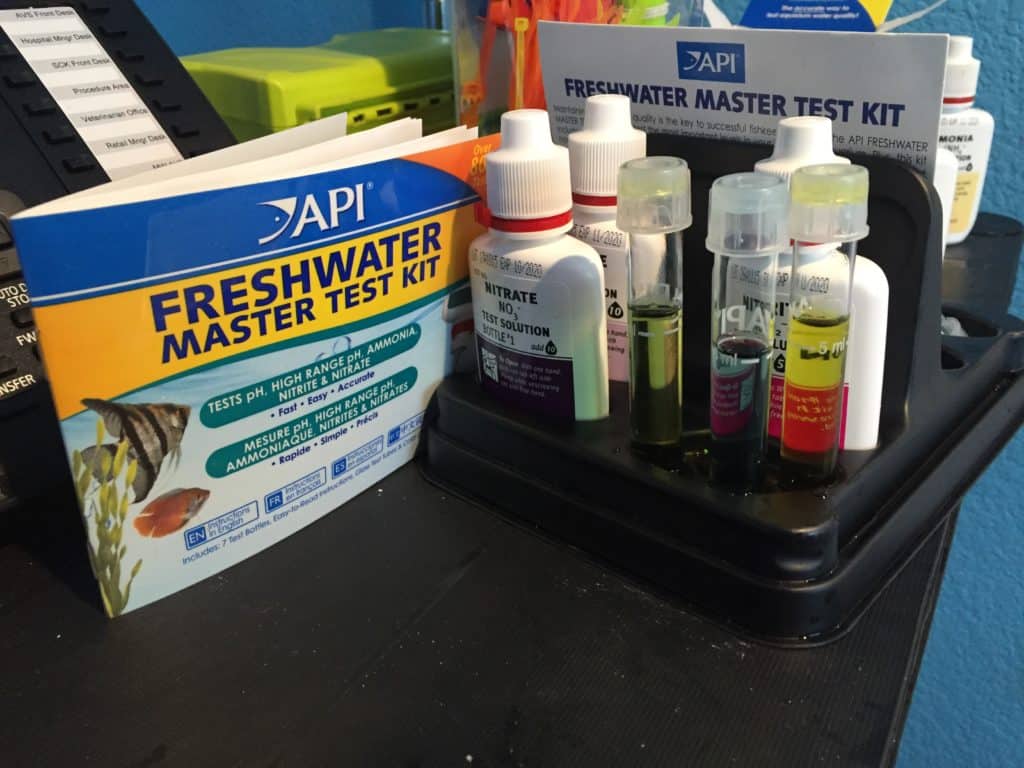Before you scroll down, make sure you take the time to read over our questions first!
Problem 1: 50-gallon goldfish tank
| Parameter | Value |
| Ammonia | 3 mg/L |
| Nitrite | 0 mg/L |
| Nitrate | 0 mg/L |
| pH | 4.5 |
| kH | 0 mg/L |
| Temperature | 70 F |
Answers to Problem 1:
What are your main concerns?
Ammonia too high, pH too low and kH too low.
Is there a name for this syndrome?
How should you attempt to fix it?
When making changes to pH, the key is to do it very gradually. It is important to test your source water to make sure the pH and kH are coming in correctly. If your kH coming in is <100 mg/L, you will need to add synthetic buffers. To correct Old Tank/Pond Syndrome, the key is to do smaller, more frequent water changes. Think no more than 5-10% every other day. Continually test your pH to make sure you aren’t moving things more than 0.5 per change and when you come back to normal.
Problem 2: 2,000-gallon koi pond
| Parameter | Value |
| Ammonia | 1.5 mg/L |
| Nitrite | 0 mg/L |
| Nitrate | 0 mg/L |
| pH | 7.5 |
| kH | 200 mg/L |
| Temperature | 70 F |
Answers to Problem 2:
What are you main concerns?
Ammonia too high
Is there a name for this syndrome?
How should you attempt to fix this?
All new systems will take 4-6 weeks to fully cycle. In the beginning of this process, your results will track the following pattern:

In order to keep your system from crashing, it is vital to keep your fish load low in these first few months. You will likely need to do a few water changes to keep your ammonia from killing your fish. In this situation, a water change is definitely warranted.
Problem 3: 10-gallon betta tank
| Parameter | Value |
| Ammonia | 0.5 mg/L |
| Nitrite | 0 mg/L (typo) |
| Nitrate | 5 mg/L |
| pH | 8.0 |
| kH | 200 mg/L |
| Temperature | 70 F |
Answers to Problem 3:
What are your main concerns?
Tank temperature too low and ammonia too high.
Is there a name for this syndrome?
No.
How should you attempt to fix this?
Get your betta a heater! Bettas are TROPICAL fish and require a temperature of at least 78F. These nitrogen cycle results are typical of a tank constantly replacing your filters. You are tossing those good bacteria you worked so hard to cultivate! I don’t care what the box says; NEVER REPLACE YOUR FILTERS!!
Problem 4: 500-gallon koi pond
| Parameter | Value |
| Ammonia | 0.5 mg/L |
| Nitrite | 0.1 mg/L |
| Nitrate | 80 mg/L |
| pH | 7.5 |
| kH | 200 mg/L |
| Temperature | 74 F |
Answers to Problem 4:
What are your main concerns?
Nitrate way too high, nitrite too high and ammonia too high.
Is there a name for this syndrome?
Overstocking
How should you attempt to fix this?
This is a VERY small koi pond and is likely overstocked with fish. When your nitrates are maxed out, you will start to see your nitrogen cycle back up, causing a secondary increase in nitrite and tertiary increase in ammonia. You will need to beef up your water change schedule, re-evaluate your filtration and possibly rehome your fish or build a bigger pond.
Problem 5: 1-gallon betta bowl
| Parameter | Value |
| Ammonia | 0.75 mg/L |
| Nitrite | 0 mg/L |
| Nitrate | 0 mg/L |
| pH | 6.5 |
| kH | 10 mg/L |
| Temperature | 74 F |
Answers to Problem 5:
What are your main concerns?
Ammonia too high, pH too low, kH too low and temperature too low
Is there a name for this syndrome?
How should you attempt to fix this?
Get your fish out of that stupid bowl and into a filtered tank! Bowls are cruel and ancient fish torture. There is no filtration for you nitrogen cycle, no even distribution of heat and doing large water changes can potentially kill your fish.
Thanks for playing along! Hope you learned something.

